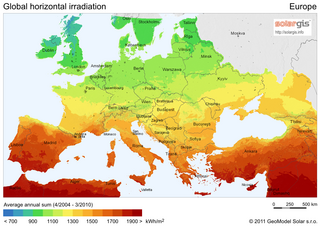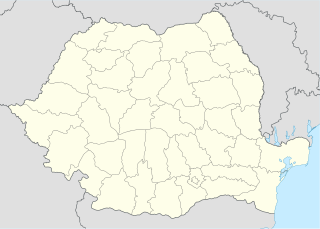Related Research Articles

The Ministry of Foreign Affairs is responsible for managing the foreign relations of Brazil. Brazil is a significant political and economic power in Latin America and a key player on the world stage. Brazil's foreign policy reflects its role as a regional power and a potential world power and is designed to help protect the country's national interests, national security, ideological goals, and economic prosperity.

Energy development is the field of activities focused on obtaining sources of energy from natural resources. These activities include production of conventional, alternative and renewable sources of energy, and for the recovery and reuse of energy that would otherwise be wasted. Energy conservation and efficiency measures reduce the demand for energy development, and can have benefits to society with improvements to environmental issues.
OMV Petrom S.A. is a Romanian integrated oil company, controlled by Austria's OMV. It is one of the largest corporations in Romania and the largest oil and gas producer in Southeast Europe. Since 2004 it is a subsidiary of OMV.

Energy in France is the energy and electricity production, consumption and import in France.

Denmark has considerable sources of oil and natural gas in the North Sea and ranked as number 32 in the world among net exporters of crude oil in 2008. Denmark expects to be self-sufficient with oil until 2050. However, gas resources are expected to decline, and production may decline below consumption in 2020, making imports necessary. A large but drastically decreasing proportion of electricity is produced from coal, and hydropower and 3–4% nuclear power is imported, while wind turbines supply the equivalent of about 47% of electricity demand by 2019.

Solar energy in the European Union consists of photovoltaics (PV) and solar thermal energy.
The Moura Photovoltaic Power Station is a large photovoltaic power station in Amareleja, in the municipality of Moura, Portugal. It is one of the largest power stations of its kind, and is built in one of the sunniest regions in Europe. Its construction involved two stages: stage 1 was completed in 2008 after 13 months, and stage 2 was completed in 2010. The entire project topped a total cost of €250 million.

China is the largest producer and consumer of coal in the world and is the largest user of coal-derived electricity. The share of coal in the energy mix declined during the 2010s, falling from 80% in 2010 to 57.7% in 2019.
This page summarizes projects that brought more than 20,000 barrels per day (3,200 m3/d) of new liquid fuel capacity to market with the first production of fuel beginning in 2003. This is part of the Wikipedia summary of Oil Megaprojects—see that page for further details. 2003 saw 30 projects come on stream with an aggregate capacity of 2.499 million barrels per day (397,300 m3/d) when full production was reached.

Romania currently has 1,400 MW of nuclear power capacity by means of one active nuclear power plant with 2 reactors, which constitutes around 18% of the national power generation capacity of the country. This makes Romania the 24th largest user of nuclear power in the world.

Solar power in Romania had an installed capacity of 1,374 megawatt (MW) as of the end of 2017. The country had in 2007 an installed capacity of 0.30 MW, which increased to 3.5 MW by the end of 2011, and to 6.5 MW by the end of 2012. However, the record year of 2013 was an exception, and new installation fell back from 1,100 MW to a moderate level of 69 MW in 2014.

ERG S.p.A. is a publicly listed Italian energy company, founded in 1938, and based in Genoa, Italy.

In 2009, Poland was the world's 9th largest hard coal producer. The country is also the second largest coal consumer in Europe, behind Germany.
Electricity in Cyprus is managed by the Electricity Authority of Cyprus. Power is primarily generated at three fuel oil-burning stations but the use of distributed renewable energy is expanding.

Solar power in Vermont provides almost 11% of the state's electricity as of 2018. A 2009 study indicated that distributed solar on rooftops can provide 18% of all electricity used in Vermont. A 2012 estimate suggests that a typical 5 kW system costing $25,000 before credits and utility savings will pay for itself in 10 years, and generate a profit of $34,956 over the rest of its 25-year life.
References
- ↑ "International Energy Annual (IEA) - long-term historical international energy statistics" Archived 2008-09-10 at the Wayback Machine
- ↑ Electric energy production by type of energy plant Archived 2007-09-20 at the Wayback Machine , National Institute of Statistics
- ↑ Annual report from Transelectrica 2008 Archived 2011-07-24 at the Wayback Machine , "Transelectrica S.A."
- ↑ Annual report from Transelectrica 2008 Archived 2011-07-24 at the Wayback Machine , "Transelectrica S.A."
- ↑ Annual report from Transelectrica 2009 [ permanent dead link ], "Transelectrica S.A."
- ↑ Annual report from Transelectrica 2010 [ permanent dead link ], "Transelectrica S.A."
- 1 2 3 Annual report from Transelectrica 2013, "Transelectrica S.A."